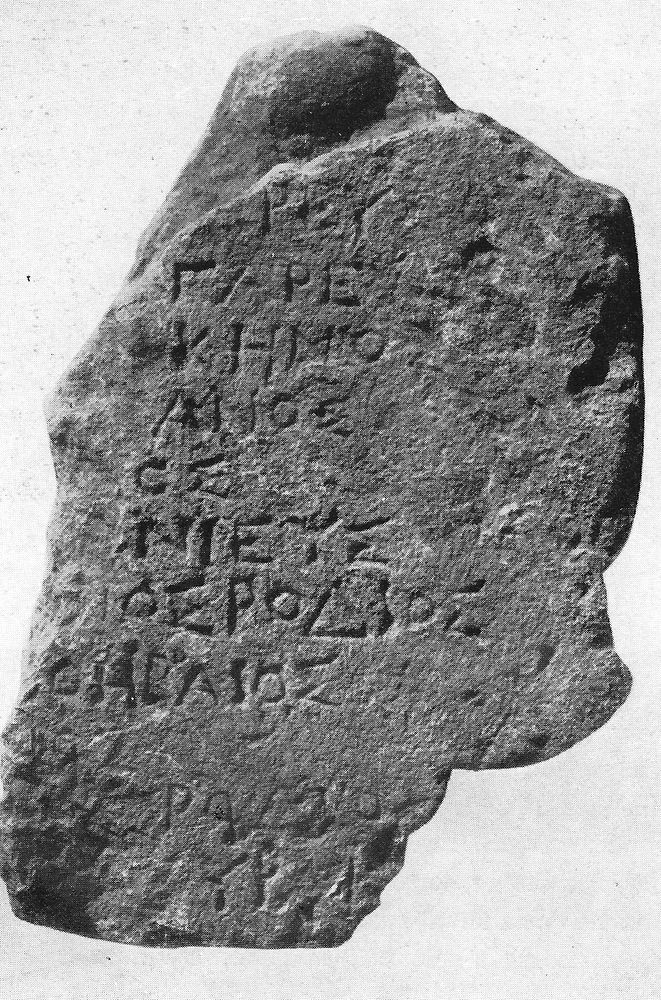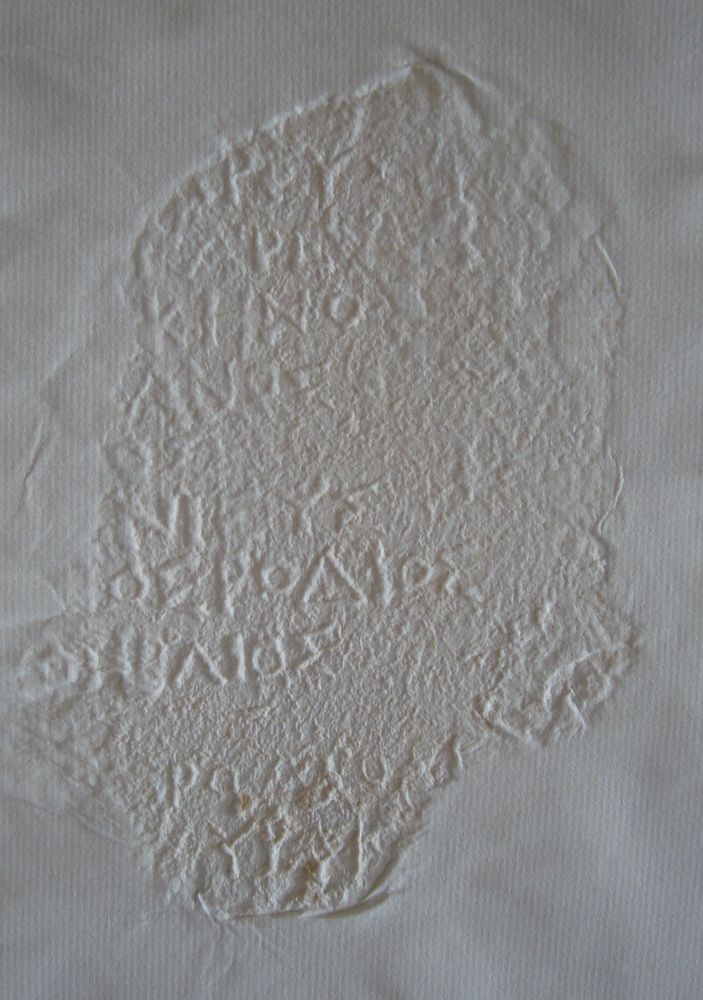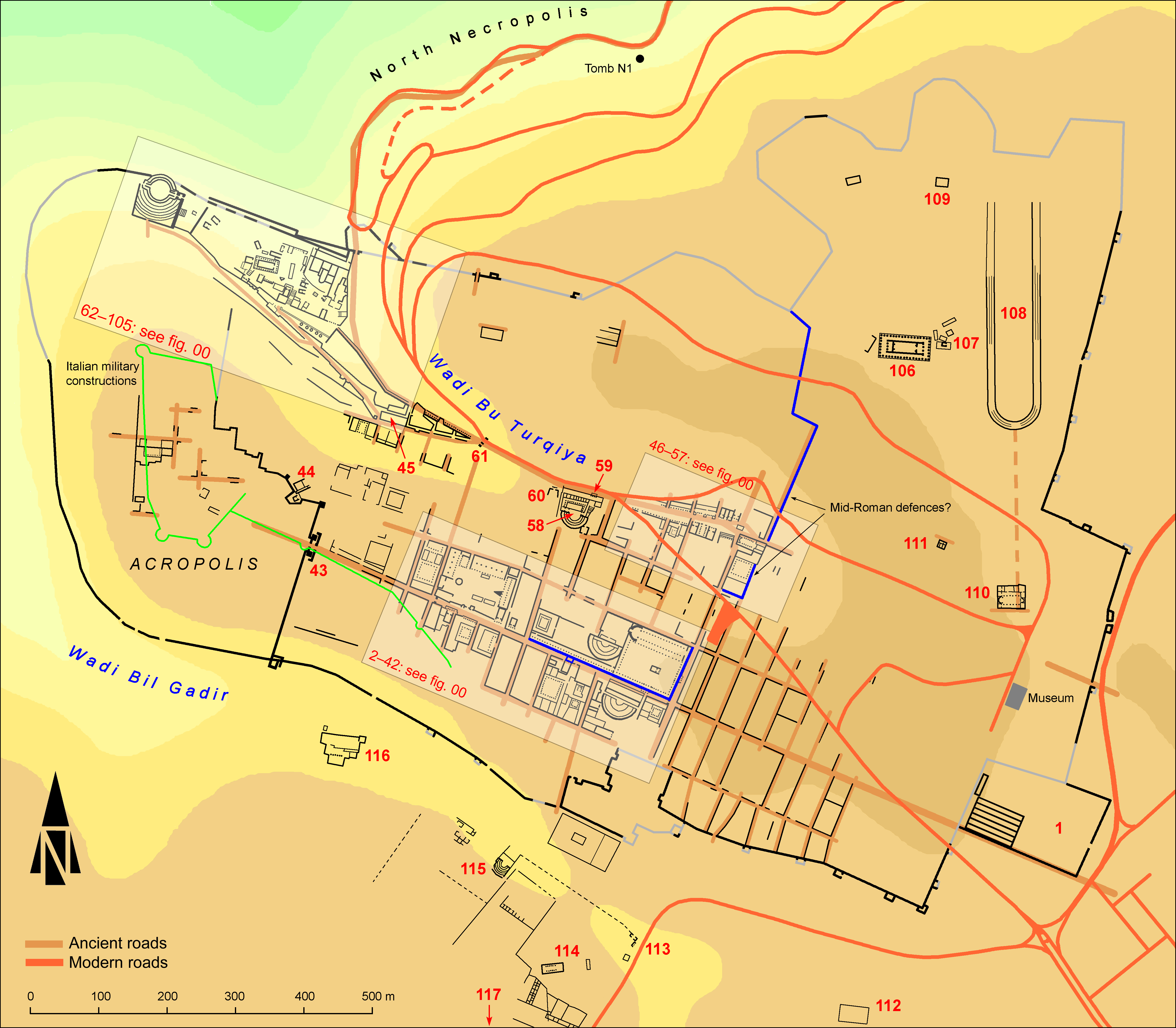EpiDoc XML:
IGCyr0973002
Trismegistos ID:
738489
Source description
Support: Fragmentary limestone block reddish from earth, broken on all sides except at right; written on front and right side (IGCyr0973502) (w: 0.11 × h: 0.165 × d: 0.05).
Layout: Inscribed on the wider side.
Letters: 0.005 to 0.01; very small omicron and theta, very large delta, slanting sigma, dissymmetrical nu; probably by a second hand from l. 9 on.
Date: End of fourth or beginning of third century BC
Findspot: Found in 1936 at Cyrene ➚: exact findspot unrecorded.
Place of origin: Findspot.
Last recorded location: Cyrene Museum, 44. Seen by Pugliese Carratelli in 1960 in Shahat: Cyrene Museum. Seen by C. Dobias-Lalou in 1979 at the same place.
Text constituted from: Transcription from stone (CDL).
Bibliography
SECir, 115 (ph.); IGCyr 097300 ➚. Cf. Fraser 1972 vol. II, pp. 826-827, footnote 221; Laronde 1987, p. 396; Rosamilia 2023, p. 28 and footnote 145.
Text
Apparatus
1: [---Ἱ]λιεύς SECir
2: [---Γαρ]γαρεύς SECir, Fraser 1972
3: [---Κυζι]κηνός SECir; [---Λαμψα]κηνός SECir; [Λαμ]ψακηνός Fraser 1972 see commentary
4: [---Τραλλι]ανός SECir tentatively suggested by Pugliese Carratelli
6: [---]νιεύς SECir
7: [---]ιος SECir
11: [---]Σ̣υρακ[όσιος] SECir perhaps written by a third hand
French translation
[---], [Untel] mégarien [Untel] mégarien, [Untel] de [---]que, [Untel de telle cité], (5) [Untel de telle cité, Untel d'Apoll?]onia, [---]nos (ou [Untel fils de ---]n) rhodien, [Untel] thébain, [Untel de telle cité], (10) [Untel] rhodien, [Untel] syracusain, [---].
English translation
[---], [So-and-so] a Megarian [So-and-so] a Megarian, [So-and-so] from [---]kos, [So-and-so from such city], (5) [So-and-so from such city, So-and-so from Apoll?]onia, [---]nos (or [So-and-so son of ---]n) a Rhodian, [So-and-so] a Theban, [So-and-so from such city], (10) [So-and-so] a Rhodian, [So-and-so] a Syracusan, [---].
Italian translation
[---], [il tale] da Megara, [il tale] da Megara, [il tale] da [---]kos, [il tale dalla tal città], (5) [il tale dalla tal città, il tale da Apoll?]onia, [---]nos (o [il tale figlio di ---]n) da Rodi, [il tale] da Tebe, [il tale dalla tal città], (10) [il tale] da Rodi, [il tale] da Siracusa, [---].
Commentary
Pugliese Carratelli spoke of a limestone panel and then of letters inscribed before firing («incisi prima della cottura»), as if it was a terracotta. However the observation of the stone confirms that it is a limestone block, reddish from the soil.
At line 1, the reading [Ἰ]λιεύς is not possible; the same ending -γαρεύς occurs at line 2 and the most evident restoration would be Μεγαρεύς, although Γαργαρεύς is not impossible.
At line 3, Fraser 1972vol. II, pp. 826-827, footnote 221 Fraser thought that he could read on his squeeze two letters more at the beginning of the line; however, as Dobias-Lalou saw the stone in 1979 exactly in the status shown by the photograph in SECir, 115 this seems impossible, unless Fraser saw in the Museum a supplementary fragment that he did not mention. It is impossible to choose between the two restorations proposed by Pugliese Carratelli. Both Kyzikos and Lampsakos are located in the North-West of Asia Minor and their ethnics share the regional suffix -ηνός.
At line 6, if we really have the ethnic of a city named Apollonia, it is impossible to known which one.
At line 9, we keep Pugliese Carratelli's reading, although the traces of letters are very faint and would be, if ever, written by a second hand. The reading is very uncertain.
We have no other instance of individual foreigners mentioned in a list in any inscription from Cyrenaica. The topic is unknown, although Fraser (Fraser 1972, vol. II, p. 582) suggested that they were mercenaries. This hypothesis seems 'probable' to Rosamilia 2023, whereas Laronde 1987, p. 396 was less convinced. One argument in favour of this hypothesis is a possible relation with the troubled period preceding Magas' arrival at Cyrene and his first years of power, i.e. between ca. 300 and 280.
CC BY-NC-SA 4.0 Deed Attribution-NonCommercial-ShareAlike 4.0 International License.
All citation, reuse or distribution of this work must contain a link back to DOI: https://doi.org/10.60760/unibo/igcyrgvcyr2 and the filename (IGCyr000000 or GVCyr000), as well as the year of consultation.


